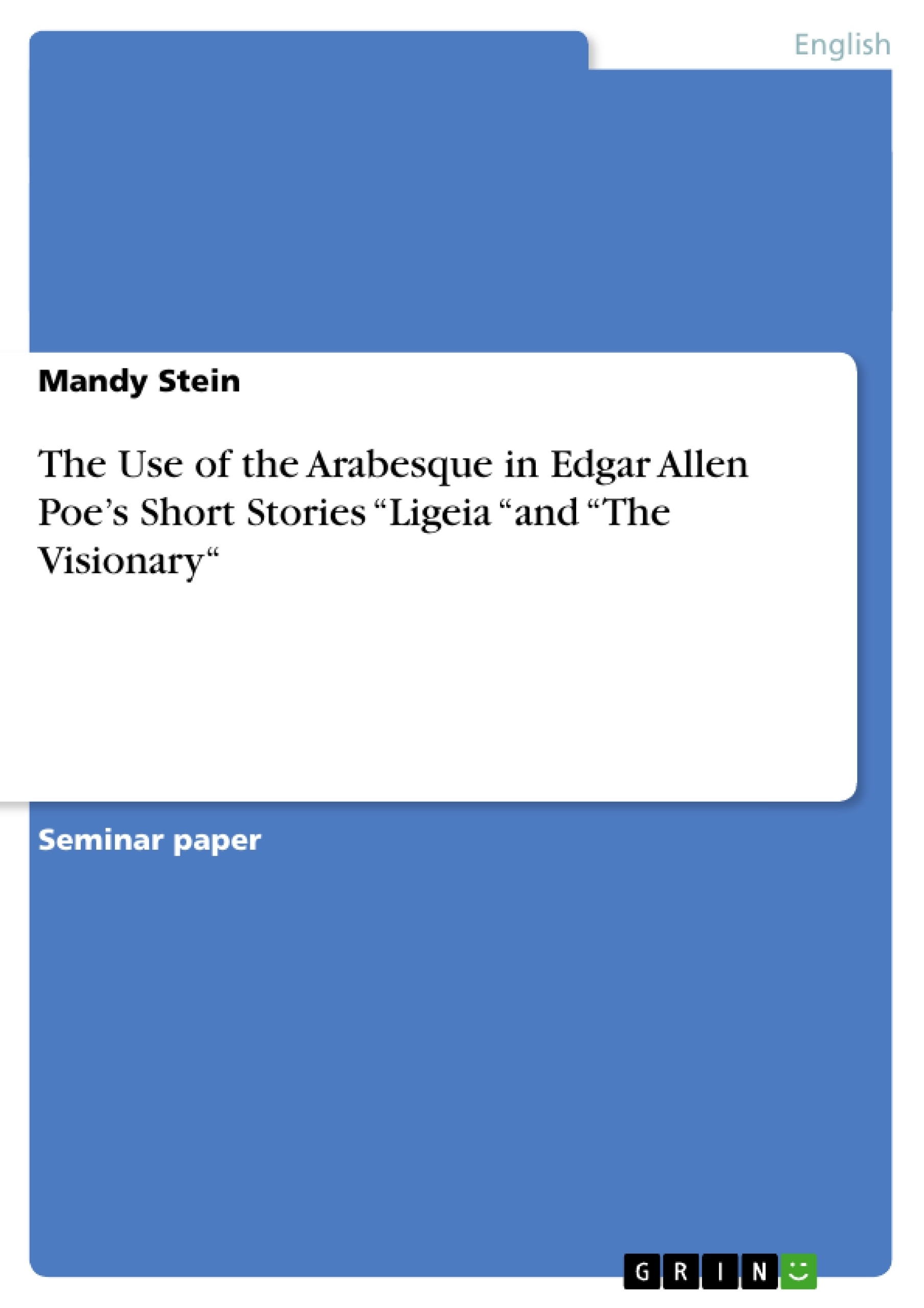“And the raven, never flitting, still is sitting, still is sitting
On the pallid bust of Pallas just above my chamber door;
And his eyes have all the seeming of a demon that is dreaming,
And the lamp-light o'er him streaming throws his shadow on the floor;
And my soul from out that shadow that lies floating on the floor
Shall be lifted -- nevermore!” (Poe 28)
These famous lines are from an often quoted poem by Edgar Allen Poe, one of the most
famous American Authors of all time. He was a writer of all kinds of literary genre but
well know for his mystery or detective stories. Who does not know “The Tell-Tale Heart”
or was shocked by the horror in “The Fall of the House of Usher”? Poe was a magnificent
writer of Gothic Novels and is still today a well-known and well referred author when it
comes to horror or even science fiction. His stories and plays are often adopted for the
theatre and also Hollywood is incapable of not portraying his well-known horror stories.
Next to his famous works Poe, like many authors of the 19th century, wrote arabesque
stories. Although there is his known Collection of Arabesque and Grotesque Stories from
1840, it is unknown to many that he followed truly an oriental writing tradition and set
footprints into this new genre like Johnson, Moore, Byron and others and developed the
arabesque term to a new limit.
But the question is if these stories are really written in the oriental tradition. Many critics
are unsure up to this day if Poe really wanted to write in the arabesque or grotesque
tradition and if he was aware of the fact that these two terms are of different background
and do not, like many people think, just refer to the same definition.
This term paper will focus on Poe’s use of the arabesque tradition in his stories “The
Visionary” from 1834 and “Ligeia” from 1838. It is the aim to find out parallels between
both stories regarding the oriental tradition.
Therefore I will first explain the term Arabesque because there are many versions of what
an arabesque could be: a style of writing, the writing itself, a wall paper etc. Also I will
focus on the term “grotesque” because this term is often, especially when used with
reference to Poe’s literature, mixed up with the term `arabesque`.
And at last I will have a closer look on the use of the term arabesque in Poe’s stories
because, as I said before, he wrote more tales of the grotesque and the arabesque than the
two I am going to refer to.
[...]
Inhaltsverzeichnis (Table of Contents)
- Introduction
- Arabesque
- Grotesque
- The Term Arabesque in Poe's Literature
- Ligeia
- The Problem of Perception
- The Story
- The Arabesque Structure of “Ligeia”
- The Visionary
- The Story
- The Arabesque Structure of "The Visionary"
Zielsetzung und Themenschwerpunkte (Objectives and Key Themes)
This paper aims to analyze Edgar Allan Poe's use of the arabesque tradition in his short stories "Ligeia" and "The Visionary," exploring parallels between the two works in relation to oriental traditions. The analysis will begin by defining the term "arabesque" and differentiating it from "grotesque," considering its various interpretations in the context of Poe's literature.
- Definition and evolution of the term "arabesque" in literature and art.
- Comparison of the narrative structures of "Ligeia" and "The Visionary."
- Examination of the use of oriental elements and motifs in both stories.
- Analysis of how the arabesque style contributes to the overall atmosphere and themes of each story.
- Discussion of the potential influence of oriental writing traditions on Poe's work.
Zusammenfassung der Kapitel (Chapter Summaries)
The introduction sets the stage by introducing Poe's work and the concept of arabesque stories. It poses the question of Poe's awareness and intentionality regarding the arabesque and grotesque traditions. The chapter on "Arabesque" defines the term, tracing its evolution and highlighting its diverse interpretations as an ornament, writing style, and literary genre. It also distinguishes the term from "grotesque." The summary of "Ligeia" will focus on literary elements and its arabesque style. The "Visionary" chapter will similarly present a literary interpretation and its arabesque elements. A concluding comparative analysis of the two stories will follow.
Schlüsselwörter (Keywords)
Edgar Allan Poe, Arabesque, Grotesque, Orientalism, "Ligeia," "The Visionary," Gothic literature, Narrative structure, Literary style, 19th-century literature, American literature.
- Citar trabajo
- Mandy Stein (Autor), 2007, The Use of the Arabesque in Edgar Allen Poe’s Short Stories “Ligeia “and “The Visionary“, Múnich, GRIN Verlag, https://www.grin.com/document/119284



